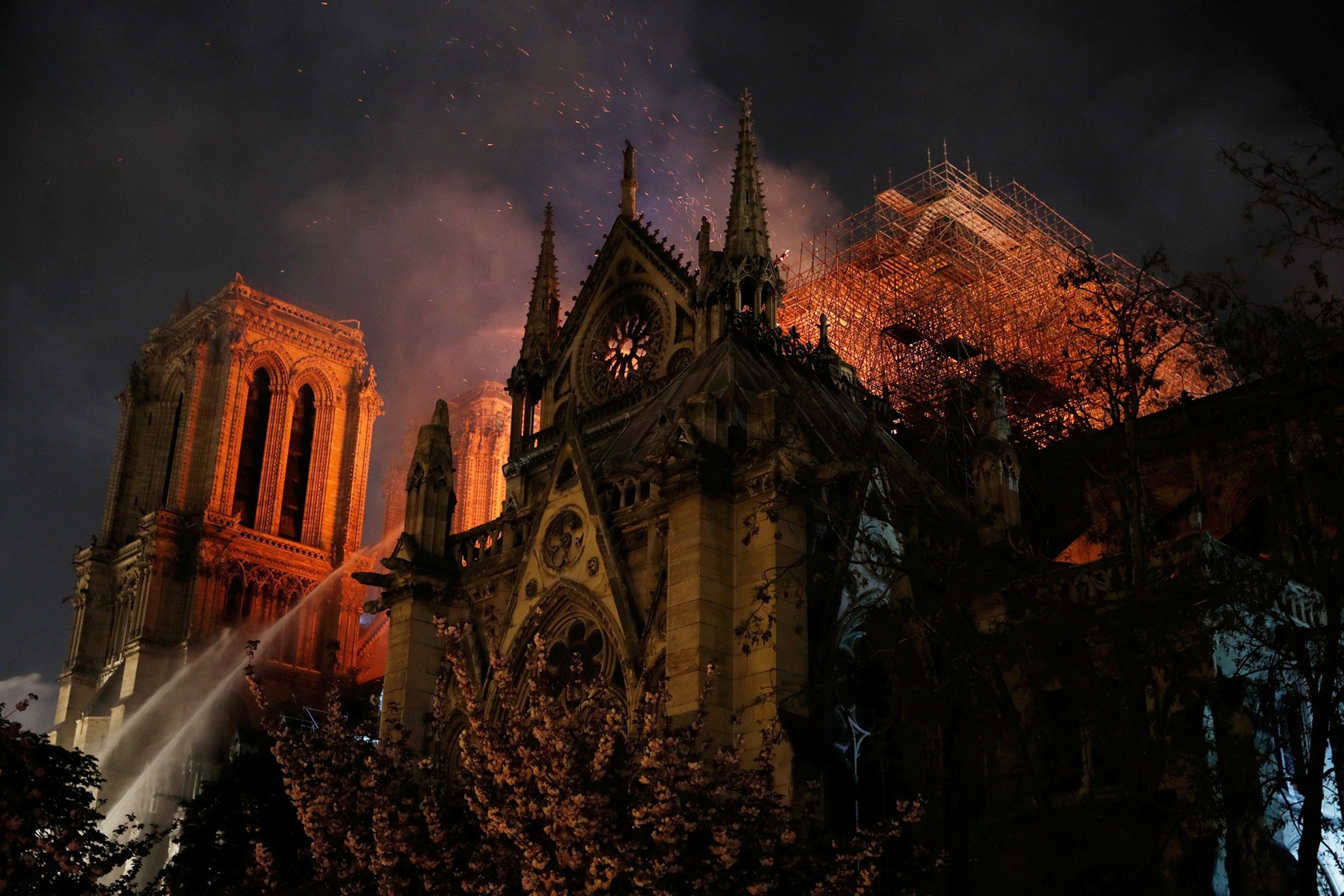
This treasure house has witnessed nearly 1000 years of history and for agonising hours, it looked as if only ashes would survive the conflagration.
Miraculously, the fire was arrested and the disaster that befell the cathedral became an opportunity not to be missed by archaeologists.

The excavations, which began in February 2022, have made some remarkable discoveries.
One of these was the remains of the rood screen that had, during the thirteenth century, set the choir apart from the congregation.
This was covered in painted scenes embellished with gold foil. The diggers unearthed life-sized statues and over 100 graves, some of which, with the skeleton enclosed in lead, could be identified to named medieval individuals.
It was possible to sample the massive charred timbers to examine the annual growth rings, in order to date to the very year when parts of the cathedral were constructed.
The building methods of the 12th century are not well documented and the iron staples that were used to bind the stones together have been recovered for analysis — iron incorporates carbon that can be dated.
As the excavators delved deeper, they began to map the foundations of the original cathedral, below which lay even earlier structures belonging to the Merovingian period of French history that ended in 751AD.
This was not the first fire. Medieval cathedrals were illuminated by candles and filled with fabric hangings and wooden fittings.
Eight centuries ago, a thief intent on stealing candlesticks managed to set the building alight. In 2019, it was probably an electric short circuit that did it, but at least the catastrophe had a silver lining as the team of diggers set to work.











